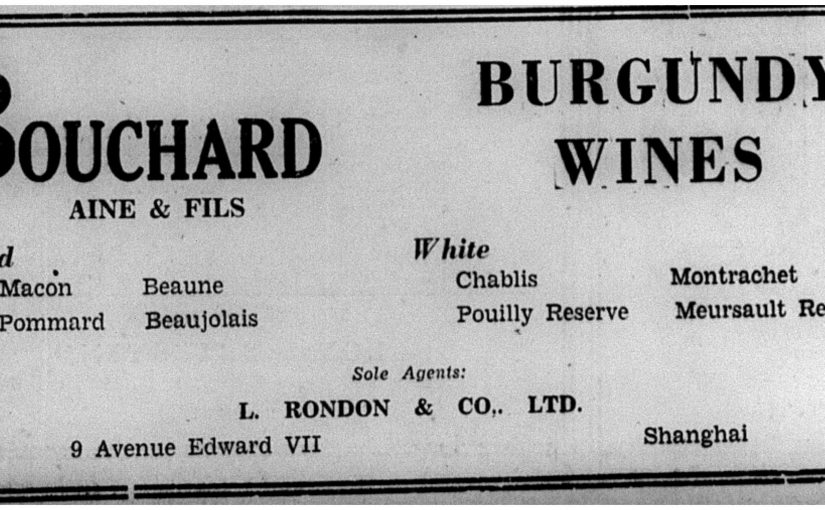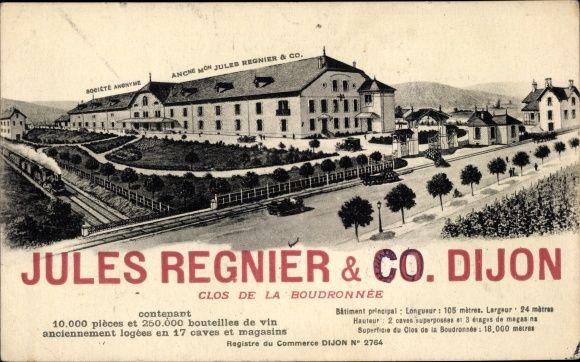The previous post was about wine import in 1920-1930s Shanghai (see post French wines in Old Shanghai for details). France was the largest provider for imported wine. Being orginally from Burgundy, I did some research into this specific region that was then famous for its wines and is even more famous today.
Burgundy wines where famous among the elite in 1920s and 1930s Shanghai. The most famous person drinking Burgundy wine was surely Sir Victor Sassoon, owner of the Sassoon house hosting the World famous Cathay hotel and many other buildings in Shanghai. Sir Victor Sassoon wrote a journal and during a trip to France on 2nd August 1934, he had diner as leading Paris restaurant La Tour d’Argent where he was served Clos Vougeot 1925. He must have really liked it as it ordered 24 bottles of it and probably took them to Shanghai.
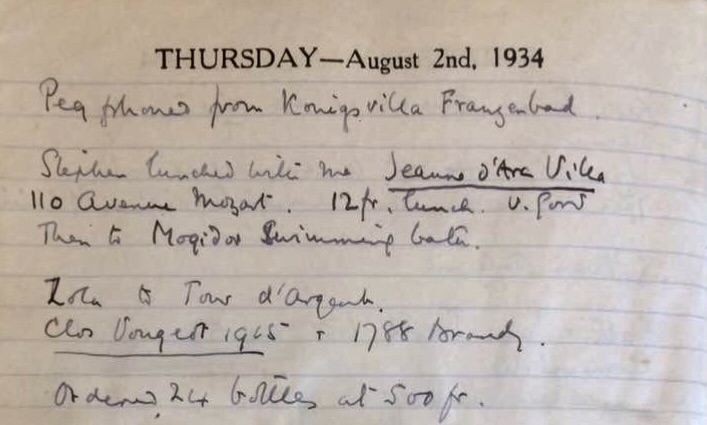
As shown in previous post, 1939 wine list of famous Sun sun department store Sky Terrace included Burgundy whites such as Chablis 1929, Meursault 1923 (with a spelling mistake) and Pouilly-Fuissé. Burgundy red were Pommard 1929, Corton 1929 and Macon 1929. It has to be noticed that 10 years old wines were sold and served in restaurants. Even the Burgundy white table wine was from 1933, i.e. 6 years old. Burgundy wines at that time were kept for years before being drunk. Although they still can be kept for decades is properly stored, they are often drunk much younger now. It is noticeable that Burgundy wines were more expensive than Bordeaux at that time in Shanghai.
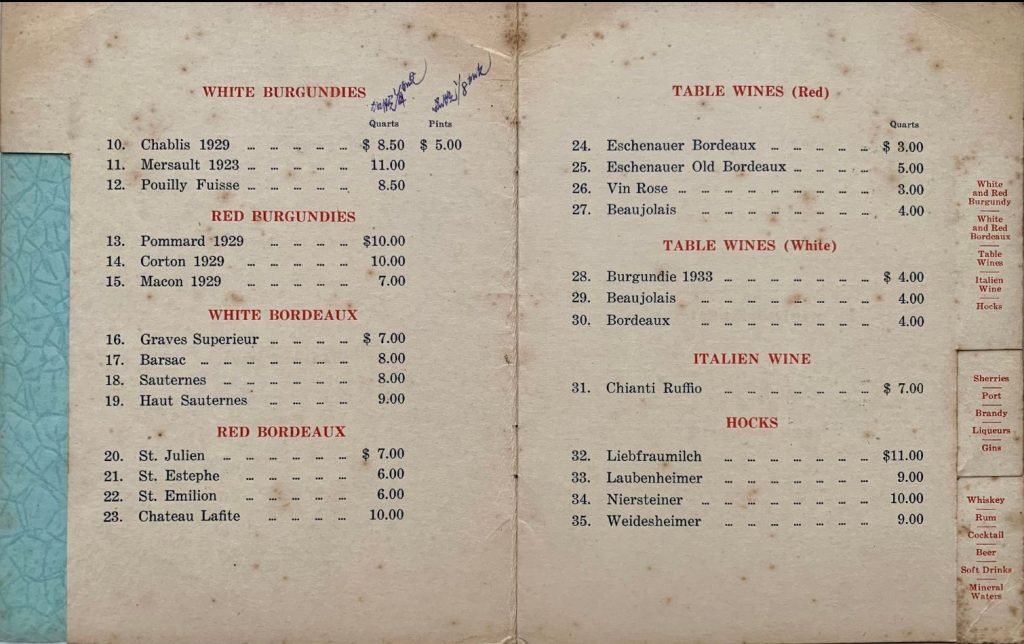
Some Burgundy houses tried to get into the Asian market using the French colonies as a springboard in the early 1920s until the mid 1930s. While Indochina (today Vietnam, Cambodia and Laos) was the largest area controlled by French in Asia, China with its large population was the main target. In a way similar to today, wine houses had agents in Shanghai that would purchase the wines and resell it being both importers and distributors.
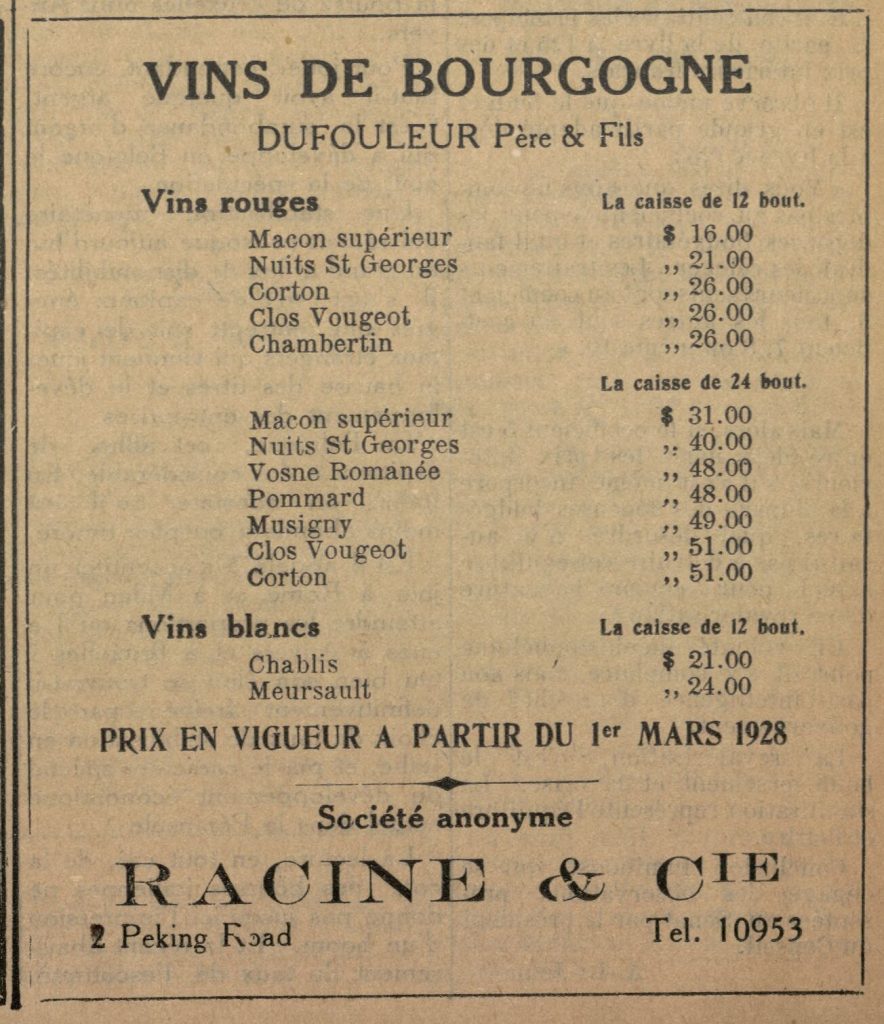
French wine in bottles was mostly handled by French people. Just like today, major trading companies imported wines in their portfolio. Above picture shows an add for wine from Dufouleur, a wine house in Nuits-Saint-Georges that is still making wines today. Their wines were imported and distributed by Racine & Cie, one of the major French trading company in Shanghai that also advertised for imported canned vegetables (see post Vegs in a can for further details).

In the same way, smaller import company Rondon was the sole agent for large wine maker and trader, or “négociant” in French, Bouchard Ainé. They already had large range of Burgundy wines imported in Shanghai by agents L. Rondon & Co. Now property of Burgundy wine power house Jean-Claude Boisset, Bouchard Ainé has been back in today’s China since the early 2000.
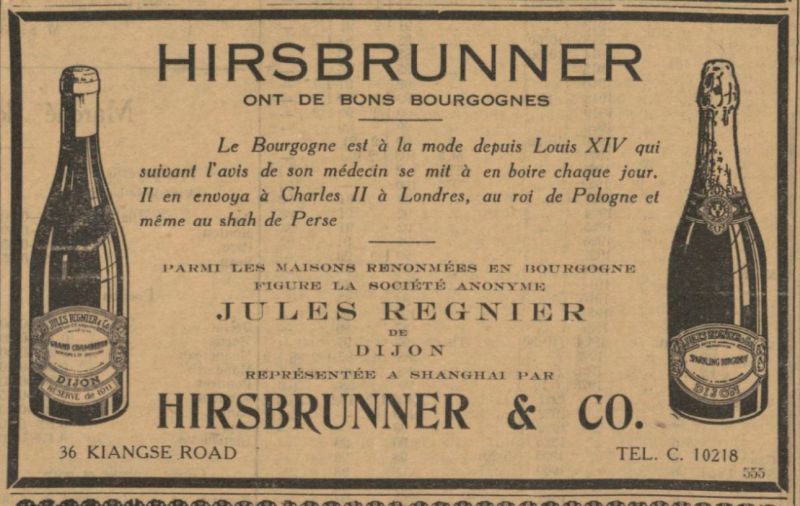
Trading company Hirsbrunner was the importer of négociant Jules Regnier. Their ads in the press were more interesting than an simple list of wines as they also tried to link their wines with history. The bottled displayed were Grand Chambertin and sparking Burgundy. Jules Régnier & Co does not exist anymore, but I found a picture of their cellar and heaquarters in Dijon.
Burgundy wine history was studied in depth by French scholar Christophe Lucand, who is also the Mayor of Gevrey-Chambertin, one the famous Burgundy village and my home town. While Indochina (today Vietnam, Cambodia and Laos) was the largest area controlled by French in Asia, China with its large number of people was the main target. Just like many other manufacturers in Europe and the US, Burgundy winemakers dreamed of having millions of Chinese drinking their wines sending back huge profit. Burgundy wine makers where by far not the only ones having this dream and similar stories are told in fantastic Carl Crow’s book “400 customers”.
Converting large number of Chinese to drink wine was a complete failure and the effort to bring Burgundy wine to China ended in the mid 1930s. Still, foreigners in China’s concession as well as elite Chinese seemed to have enjoyed those wines a lot. It took another 90 years for Burgundy wines to become famous in China, where they now are the darling of wine lovers imported by numerous trading companies.
More information about wine import in old Shanghai can be found in post French wine in Old Shanghai.
